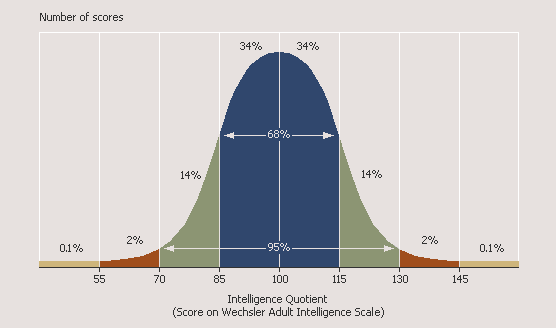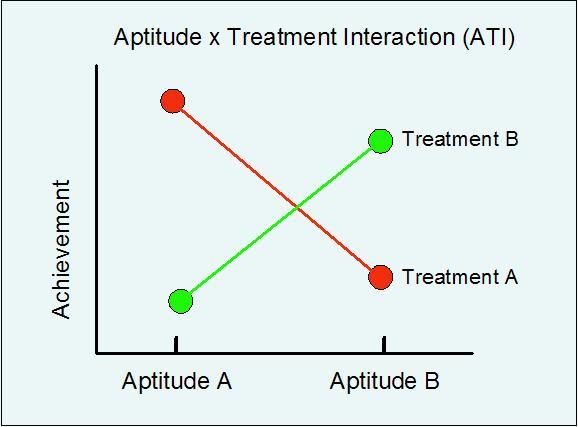
updated for fall, 2005
Theories of intelligence define partitionings or hierarchical organizations of human ability.

Intelligence tests also divide human ability in different ways represented by subscales.
Wechsler Adult Intelligence Scale (WAIS)
Wechsler Intelligence Scale for Children (WISC)
Canadian Cognitive Abilities Test (CCAT)
Gardner's Multiple Intelligences
The normal distribution (alias gaussian distribution, bell curve) is found throughout nature. Most human abilities are normally distributed.

Which image is most different from the others?

Ice is to water as liquid is to:
(A) temperature
(B) gas
(C) solid
(D) steam
Intelligence tests have been criticized for culture-bias.
Schools use cognitive ability (intelligence) tests to identify exceptional children, but critics question whether such testing programs are necessary.

So far, research on learning preferences or learning styles has not discovered strong preferences that can be used to effectively adapt teaching to the individual.
An aptitude-treatment interaction occurs when people with one type of aptitude (aptitude A) learn best with a certain type of treatment (treatment A), and people with a different type of aptitude (aptitude B) learn best with a different type of treatment (treatment B). However, very few aptitude-treatment interactions have been found.

When you do have an ATI, you can obtain higher achievement by giving treatments that match aptitudes.
But more often, research finds that one treatment works best for most aptitudes.

For more information go to http://www.psych.org/public_info/adhdfactsheet42401.pdf
* Lifelong developmental disability
* Usually recognized by age three
* Afflicts almost two in a thousand people
* Four times more common in boys than girls
* Found globally in all nations and cultures
* Symptoms: unusual responses to sensations, absent or delayed language, difficulty in relating to others
* Assessment (DSMMD IV):
(1)impairment in social interaction, e.g., lack of social/emotional reciprocity
(2)impairment in communication, e.g., delayed language development; repetitive, unvaried use of language
(3)repetitive and stereotyped behavior patterns, e.g., hand flapping or whole-body movements
* Causes unknown, but certainly neurological and likely biological in origin.
* Cognitively the autistic person is lacking in ability to model others' minds or intentions.
* Asperger's syndrome is similar to autism except that language development is normal. Often Asperger's syndrome is viewed as high-functioning autism.
* Scientifically investigated treatments include applied behavior analysis and Lovaas therapy.
To what extent should exceptional children be integrated into regular classrooms?
Arguments for full inclusion
Arguments against full inclusion
Ability grouping is a complex issue. Should students be placed in groups and classes with others of similar ability (homogenous grouping), or should they be placed in mixed ability groups and classes (heterogenous grouping)?
Benefits of homogenous grouping.
Benefits of heterogenous grouping.